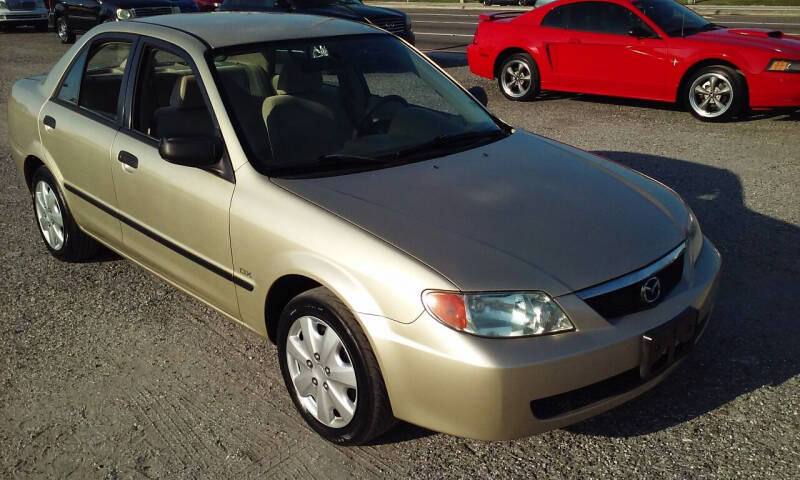

US-market models had round sealed-beam headlamps mounted in pill-shaped bezels fitting the original openings. The "1200" was offered in the United States in 1971 and again for the 1973 model year. The Familia Presto Van continued largely unchanged until the summer of 1978, aside from the 1.3 losing two horsepower along the way. The five-door Van range was gradually expanded downwards as the three-door models dropped in popularity. The Familia Presto Van, with OHC engines, received chassis numbers MP3xV/SP3xV for the 1000 (3-door/5-door) and MT2xV/ST2xV for the 1200. The 1000 Van (Japanese terminology for the station wagon, which was intended for commercial use there) received either BPCV or BPBV chassis codes, signifying three- or five-door versions. All three models were available as either Standard or Deluxe. FA2T55 was a short bed with 500 kg (1,100 lb) max load, 65 was a long bed with the same capacity, while the 66 upped that to 600 kg (1,300 lb). The pickup received the BPB55, BTA55/65, or FA2T55/65/66 model codes respectively when fitted with the OHV 1.0 or 1.2, or the OHC 1.3. In Thailand, a version of the pickup was produced in small numbers until the late 1990s as the Familia Super Cab. In South Africa, the little bakkie was sold as the "Mazda F-1000" or "F-1300". The pickup models were built until 1991 for markets such as South Africa, Zimbabwe, and the Philippines. The Van (wagon) model was available with either three or five doors, although most export markets only received the five-door version.ġ970–1973 (Familia Presto FA3 series 1) ġ990s Mazda Familia Super Cab truck (Thailand) Power outputs (SAE gross) in Japan of the facelifted, overhead-cam-engined versions were 62 and 75 PS (46 and 55 kW) respectively. In this form, the car was first exhibited in Europe at the 1968 Paris Motor Show in the autumn of that year. A larger 1169 cc straight-four engined version came along in February 1968, becoming the "Mazda 1200" for export. After an April 1970 facelift (called the "Familia Presto" in the domestic Japanese market), the slightly different OHC "PC" 1-liter engine was also offered. In July 1968 the rotary-engined version (R100) was introduced, along with a new coupé bodywork which was also available with the 1200 cc piston engine. It was sold as the "Mazda 1000" in some markets. The new Familia appeared in November 1967 with the same pushrod 987 cc engine as used in the previous generation sedans. Mazda Familia 1300 pickup long bed (FA2T65) Data is for models as marketed in the Japanese domestic market.Ĭoil sprung independent by double wishbones / Live axle and semi-elliptic leaf springs Primary sources below are listed at the head of each column, information sourced elsewhere is referenced directly in the relevant cells. Some of these plants kept manufacturing the Familia long after it was discontinued at home. Mazda Familias were manufactured in the Hiroshima Plant and also assembled from " knock-down kits" in various countries including Taiwan, Indonesia, Malaysia, South Africa, Zimbabwe, Colombia, and New Zealand. In addition, the Familia name was used as the Mazda Familia Wagon/Van, a badge-engineered version of the Nissan AD wagon (1994–2017) and Toyota Probox (2018–present). The Familia was also rebranded as the Ford Laser and Ford Meteor in Asia, Oceania, Southern Africa, some Latin American countries and, from 1991, as the Ford Escort and Mercury Tracer in North America. In Europe, all Familias sold after 1977 were called "323". In North America, the 1200 was replaced by the Mazda GLC, with newer models becoming "323" and "Protegé". For export, earlier models were sold with nameplates including: "800", "1000", "1200", and "1300". It was marketed as the Familia in Japan, which means "family" in Latin. The Familia line was replaced by the Mazda3/Axela for 2004. The Mazda Familia ( Japanese: マツダ ファミリア, Matsuda Famiria), also marketed prominently as the Mazda 323, Mazda Protegé and Mazda Allegro, is a small family car that was manufactured by Mazda between 19. Mazda Familia Wagon (BG generation, station wagon version)


 0 kommentar(er)
0 kommentar(er)
